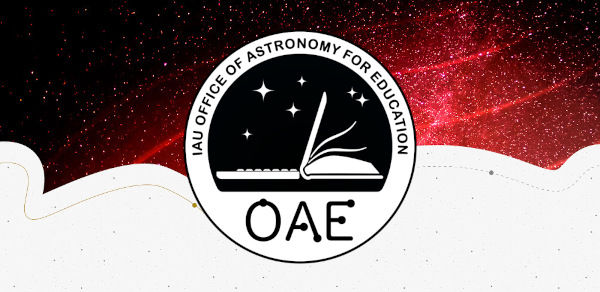This page describes an image Mars
Image caption:
This image of the planet Mars taken by NASA's Mars Global Surveyor Orbiter in 1999 shows its dry surface. The picture features the most spectacular geological regions on Mars. Besides the deep Valles Marineris valley we see four volcanoes. While three of them form the Tharsis ridge, the Olympus Mons is largest volcano we have so far discovered in the Solar System. Ice clouds cover parts of the Martian surface.
Scroll to captions in other languages
Image credit:
NASA/JPL/MSSS Credit Link
Related glossary terms:
Inner Planet
, Mars
, Planet
, Terrestrial Planet
Categories:
Solar System
Image license: Public Domain Public Domain icons
The media file captions presented on the OAE website were written, translated and reviewed by a collective effort from the OAE, the OAE Centers and Nodes, the OAE National Astronomy Education Coordinators (NAECs) and other volunteers. You can find a full list of credits for our translation project here. All media file captions are released under a Creative Commons CC BY-4.0 license and should be credited to "IAU OAE". The media files themselves may have different licenses (see above) and should be credited as listed above under "credit".
Captions in Different Languages:
Image caption: Cette image de la planète Mars prise par l'orbiteur Mars Global Surveyor de la NASA en 1999 montre sa surface sèche. L'image montre les régions géologiques les plus spectaculaires de Mars. Outre la profonde vallée Marineris, on y voit quatre volcans. Trois d'entre eux forment la crête de Tharsis, tandis qu'Olympus Mons est le plus grand volcan découvert à ce jour dans le Système Solaire. Des nuages de glace couvrent une partie de la surface martienne.
Image credit: NASA/JPL/MSSS
Related glossary terms: Mars , Planète , Planète intérieure , Planète tellurique Caption translation status: Not yet approved by a reviewer
Caption translators: Gilles Remy
Image caption: Questa immagine del pianeta Marte, scattata dal Mars Global Surveyor Orbiter della NASA nel 1999, mostra la sua superficie asciutta. L'immagine presenta le regioni geologiche più spettacolari di Marte. Oltre alla profonda "Valles Marineris", vediamo quattro vulcani. Tre di essi formano la dorsale di Tharsis, mentre "Olympus Mons" è il più grande vulcano finora scoperto nel Sistema Solare. Nubi di ghiaccio ricoprono parte della superficie marziana.
Image credit: NASA/JPL/MSSS
Related glossary terms: Marte , Pianeta , pianeta interno , Pianeta terrestre Caption translation status: Approved by a reviewer
Caption translators: Giuliana Giobbi
Caption reviewers: Rodolfo Canestrari
Image caption: 这张由美国宇航局火星勘测轨道飞行器于 1999 年拍摄的火星图像显示了火星干燥的表面。这张照片展示了火星上最壮观的地质区域。除了深邃的马林里斯谷之外,我们还看到了四座火山。其中三座形成了塔西斯山脊,而奥林帕斯火山则是我们迄今为止在太阳系中发现的最大的火山。冰云覆盖了火星表面的部分区域。
Image credit: 美国宇航局/JPL/MSSS
Related glossary terms: Planet , 内行星 , 火星 , 类地行星 Caption translation status: Not yet approved by a reviewer
Caption translators: Lin Shijie
Image caption: 這張由美國宇航局火星勘測軌道飛行器於 1999 年拍攝的火星圖像顯示了火星乾燥的表面。這張照片展示了火星上最壯觀的地質區域。除了深邃的馬林里斯谷之外,我們還看到了四座火山。其中三座形成了塔西斯山脊,而奧林帕斯火山則是我們迄今為止在太陽系中發現的最大的火山。冰雲覆蓋了火星表面的部分區域。
Image credit: 美國宇航局/JPL/MSSS
Related glossary terms: Planet , 內行星 , 火星 , 類地行星 Caption translation status: Not yet approved by a reviewer
Caption translators: An automated transliteration from the simplified Chinese translation by - Lin Shijie









